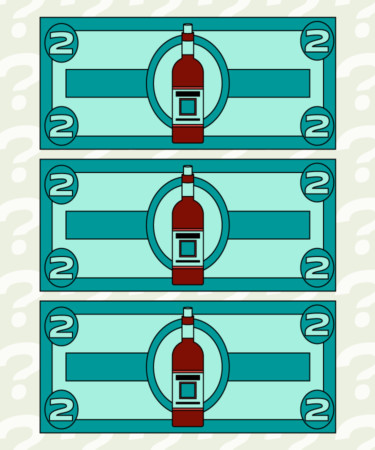Aging wines can be a tricky task. Determining whether or not it is time to crack them open, what temperature to store them at, or even deciding which bottles deserve the cellar treatment is often a complete headache. But most people know the old adage: “Wine gets better with age.” So reasonably, some people may think that aging wines that weren’t so extravagant or complex in the first place — like Trader Joe’s Charles Shaw wines (a.k.a.“Two Buck Chuck”) — might be a worthy investment.
To discuss why some wines age gracefully and others don’t, we talked to Keith Beavers — VinePair’s tastings director and host of the “Wine 101” podcast — about how winemakers create wines for different purposes.
“All wines age because all wines reduce in the bottle,” says Beavers. But, “there are certain wines that are built for aging; others are not.”
A wine that was created with the intention of aging is inherently going to be more expensive. There is a significant amount of scrutiny involved in the winemaking process to develop a wine that will continue to grow in complexity over time. Winemakers consider everything from the yield of grapes, to temperatures, acidity, barreling, and more. Even deciding when a wine is at its peak aging point is a fine-tuned process determined by winemakers and professionals.
“When there is that attention to detail, that winemaker is making something precious to love at its peak. All of that work is deserved,” says Beavers. “But it’s a testament to good winemaking — before peak, the wine is still great. After peak? Still delicious.”
If winemakers are so methodical in every step of the process, then logically, even producers of bottom-shelf wines must consider aging potential as much as their more high-end counterparts. “When a larger brand is making a wine, they are not thinking about the vineyard,” Beavers says. “They are thinking about the consumer.”
When winemakers produce on a large scale, they tend to focus on appealing to the masses by creating readily enjoyable, focus group-approved products. “They are thinking about what color, mouthfeel, and flavor their consumer is looking for,” says Beavers. “They want them to enjoy that wine so much, they buy it again tomorrow.”
While these wines can potentially age, it doesn’t mean that they should. Cheaper wines are designed with the intention to be drunk soon after they’re bought, with no time to sit and gather dust in a cellar. They are also more likely to have colorings, additives, or large amounts of sulfites, which are intended to preserve flavor, not allowing it to change. Thus, the whole endeavor of aging these wines is often fruitless.
But that doesn’t mean that bottom-shelf wines do not have a time or place. “Just because a wine doesn’t age doesn’t mean it shouldn’t be consumed,” says Beavers. “There is nothing bad about each of these categories; they just are what they are.”
